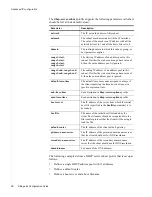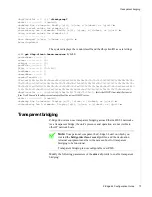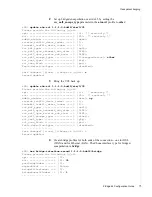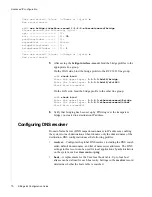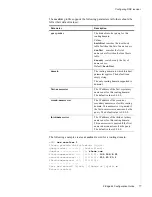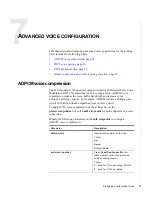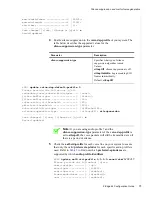
Advanced IP configuration
82
Z-Edge 64 Configuration Guide
10
Create a ppp-auth record to set up password authentication for PPPoA
connections:
zSH> new ppp-auth 1/1
user-defined subscriber ID/user-defined PPP
authentication ID
Please provide the following: [q]uit.
ip-ifindex: ---> { }: 1-1-1-0/ip
lgid: ---------> {0}: 12
lineGroupId of WAN port
pap-enable: ---> {disabled}: enabled
pap-peer-id: --> {}: ‘test’
user-defined peer ID
pap-password: -> {}: ‘test’
user-defined password
chap-enable: --> {disabled}:
chap-name: ----> {}:
chap-secret: --> {}:
status: -------> {valid}:
....................
Save new record? [s]ave, [c]hange or [q]uit: s
New record saved
Note:
The pap-peer-id and pap-password values must be
entered as strings with single quotes. After the ppp-auth record
is saved, the pap-peer-id and pap-password values will be
converted to hexadecimal values. For example, the string ‘test’
will be returned as 74:65:73:74.
11
PPPoA is now enabled.Verify that your connection has been setup by
issuing a route show or interface show command. You can also ping the
destination IP address.
12
The ppp-ncp profiles are used to set up network control protocols (NCPs)
for establishing and configuring network-layer protocols. Create a
ppp-ncp record using the name of the name of the ip-interface-record
on which the PPPoA connection is carried (see Step 7):
zSH> new ppp-ncp pppoa/ip
Please provide the following: [q]uit.
ip-comp-protocol: ------> {none}:
max-slot-id: -----------> {3}:
comp-slot-id: ----------> {disabled}:
ip-addr-enable: --------> {disabled}:
restart-timer: ---------> {3}:
max-config-retries: ----> {10}:
max-terminate-retries: -> {2}:
max-failure-retries: ---> {10}:
....................
Save new record? [s]ave, [c]hange or [q]uit: s
New record saved.
Deleting a PPPoA interface
1
Delete the PPPoA ip-interface-record profile:
zSH> delete ip-interface-record ip-interface-record pppoa/ip

